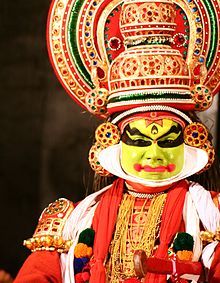Ancient forms of theater in India were
first born in Kerala as ceremonial dances. It was known as "Chakyar",
and eventually sprouted into the different forms of Indian dramatics. The
Kerala dances were made to be praises to higher powers, like Bhagavati, the
Earth-Mother goddess. They worshipped their gods, land, and even animals, like
the snake, as they were seen as a representation of strength and renewal. This
began their festivals of dancing, which praised whom or what they were
worshipping, with traditional make up and costumes to embody the deity.

These traditional Indian dances soon expanded
into a world of theatrics and music as well. With the artistic revolutionary
period of the Natyasastra, drama and music became one, spurring the development
of theatrical dance forms like Brharatnatyam, Kathak, Orissi, Kathakali, and
Manipuri. In this period, Sanskrit poetry was introduced to Indian Kathakali.
Sanskrit is often scientific, technical, philosophical, or dharma texts used as
hymns or mantras, and became the basis of this art form. Kathakali plays became
poetry recited or sung by the hero to the audience, as well as various sacred
texts, stories, and legends to relay the wisdom of the gods. They would often be
repeated as a sort of ritual. The new elements to Kathakali held the same
intensity but with a new twist, and “the most striking element in Kathakali is its
most dramatic quality; gods and heroes, demons and spirits who appear from
another world in costumes and headgears which are inspiring and belong to a
world of myth and legend,” (“History”).Today, Kathakali holds that structure,
and is a mix of the traditions of Dravidians, Nairs, Aryans, and Brahmins. This
art form is perfect for entertainment and for lessons, and “[Kathakali]
combines the consciousness, the religious practices and the techniques of
these... cultural streams in perfect harmony and balance,” (“History”).